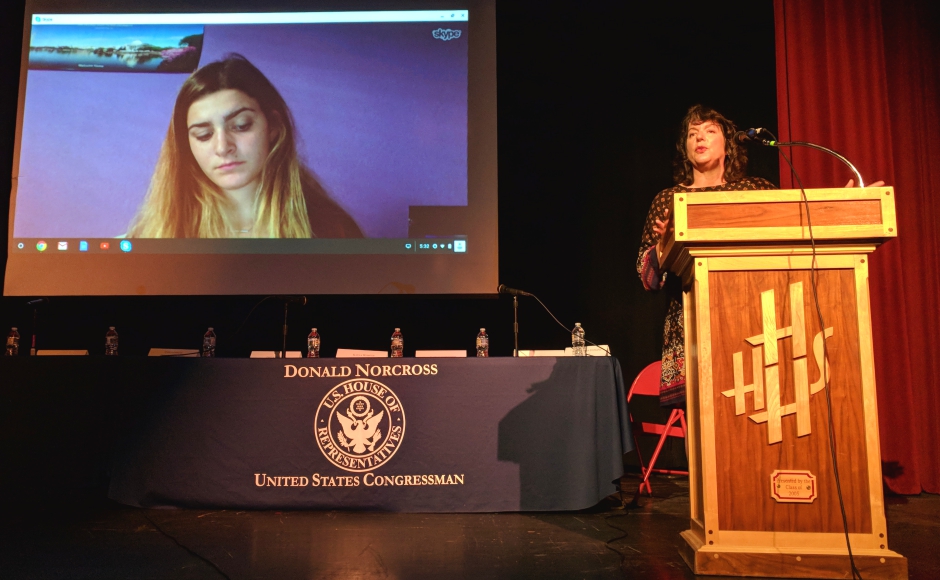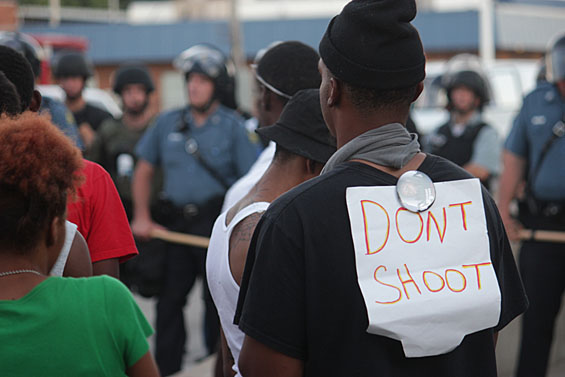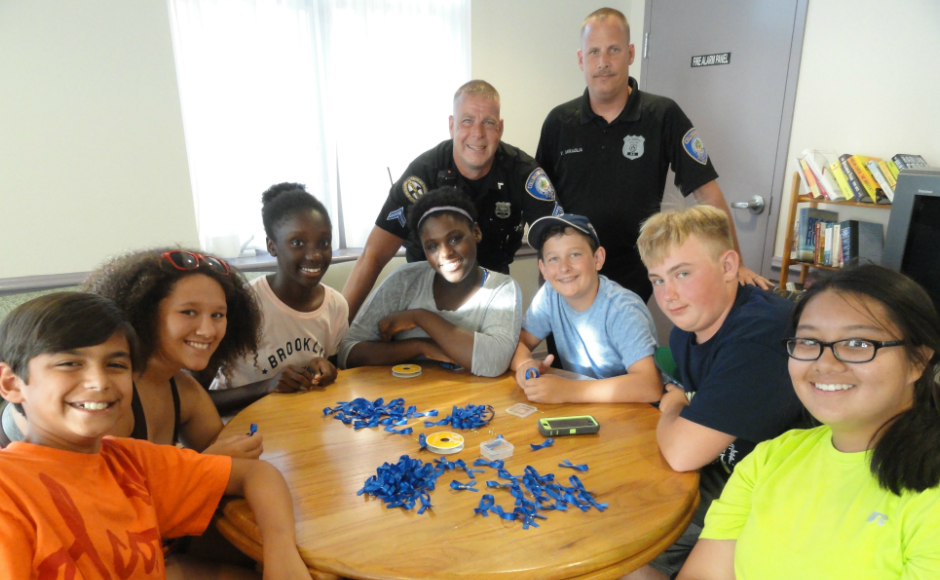Rutgers-Camden criminal justice professor and Collingswood resident Nate Link explores the question of School Resource Officers (SROs) and their impact on learning environments.
By Nate Link, Ph.D. | October 21, 2022
Police play an important role in the community, and I’m grateful to live in a town where they are responsive when residents have concerns.
I feel this way on a few levels—as a resident, a father to two little kids, and in my career as a criminologist. In that latter role, I study crime and system reactions to it, and I collaborate with public and private agencies to try and identify best policy and practice using research evidence.
For these reasons, I want to direct readers’ attention to the upcoming local elections and the intersection of law enforcement and education.
The Collingswood Chief of Police, Kevin Carey, is leading the ticket in one of the campaigns this year (“We’re Better Together”). Although he has a good reputation, I want to focus on the general pattern of law enforcement crossing boundaries into education, where they can vote on (or, at minimum, heavily influence) policy proposals critical to our children’s education.
One of the things that law enforcement professionals may aim to accomplish when they sit on school boards is enhancing the size of their force by hiring a school resource officer (SRO). An SRO is a sworn, full-time police officer stationed within schools to handle school-related matters.
Although Collingswood has had an SRO before, one who also served on the town’s school board, both new and old evidence suggest it would be a mistake for Collingswood to readopt this policy. Here I focus narrowly on dispelling a few myths about SROs:

Parkland, Florida school shooting survivor Carly Novell and her aunt, Robin Cogan talk about the generational impact of gun violence. Credit: Matt Skoufalos.
Myth 1: We need SROs to keep our kids safe from school shootings.
You wouldn’t know it based on what we see in the media, but school shooting events that lead to fatalities are exceedingly rare; similar to the odds of winning the lottery, or dying by lightning, depending on how you measure it. There is an infinitesimally tiny chance that Collingswood would experience a mass shooting.
But more importantly, the existing evidence shows that SROs do not reduce the risk of school shootings. James Alan Fox and his colleagues are among America’s foremost experts on the subject. They recently concluded that “Based on the available evidence, singular approaches like target hardening or utilizing SROs will not reduce risk for school shootings and may lead to other deleterious effects.”
Just last year, another team of researchers from the non-partisan Violence Project released an authoritative study published by the American Medical Association. Driven by the question of whether SROs keep students safer, they analyzed 133 U.S. school shootings from 1980-2019 and found that the presence of an SRO did not reduce student injuries or deaths.
In fact, the student fatality rate was 2.8 times greater in schools where there was an SRO present. The findings may sound counterintuitive, but several reasons might explain the pattern, including that when motivated perpetrators know about an SRO’s presence they may devise more detailed plans, or arrive with more weapons and ammunition.
Although we should always be cautious about drawing general conclusions from anecdotes, the tragic massacres in Parkland and Uvalde are two recent examples that illustrate this point: an SRO in the former, and a heavy law enforcement presence in the latter, did not enhance students’ safety in these situations.
This evidence taken together shows that SROs don’t reduce the chances that a shooting will happen, and they don’t mitigate the harm in those extremely rare instances when it does.
Critics of my angle might counter by reminding me that the police have been called to Collingswood schools recently for threats of violence, including threats of gun violence. The idea of school violence is unsettling for sure, but, like most threats, these incidents didn’t turn into real violence. More importantly, these examples demonstrate that the system is working as is: police were notified and safely addressed the situation, all without an SRO.

“Don’t Shoot/Hands Up” has become the the rallying cry of protesters nationwide over the death of Michael Brown of Ferguson, MO. Credit: Danny Wicentowski / Riverfront Times.
Myth 2: It can’t hurt to have an SRO.
It actually can hurt in a few ways. Placing police in schools will naturally result in an increase in referrals to police, even though the underlying behavior of the student body will be the same.
Non-serious and age-typical student misconduct gets viewed through a delinquency lens, and arrests and other serious legal action can result. Students of color are especially at risk for this kind of enhanced punishment. Arrests and other formal contact with the legal system are harmful to impressionable youth in many ways, including educational and mental health outcomes, both in the moment and well into adulthood (i.e. potentially negatively affecting college applications, employment prospects, housing opportunities, self-concept, and much more).
Police presence can also cause psychological harm, as we know there is a great divide in perceptions of police across races. Research shows that a majority of Black Americans are fearful of the police. About half of Black respondents in a recent national survey reported that they would rather be the victim of a burglary or a robbery than have an unprovoked contact with an officer.
Police interactions with students who have disabilities such as autism spectrum disorder have been similarly strained; conduct stemming from the disability itself can be viewed as odd or as misbehavior that needs to be investigated. It’s not surprising, then, that surveys show a majority of people on the spectrum report a fear of police contact.
Student stress and fear are not some innocuous emotions. They carry real consequences, including that they stifle learning.
Aside from these direct negative impacts, Collingswood voters should think about what opportunities are missed when a town decides to invest in law enforcement over education. The cost to cover an SRO’s salary and benefits could go a long way toward fixing infrastructure, improving athletic facilities, providing books and supplies, and hiring critical educational staff. Our classrooms are also well over capacity.

Collingswood students work with police officers on the Blue Ribbon Project in 2015. Credit: Matt Skoufalos.
Myth 3: SROs are ideally positioned to act as supports, mentors, and provide guidance.
Finally, advocates of SROs claim that some of them are great with children, developing bonds and helping them through emotionally difficult times.
This is very likely true in some circumstances. The combination of self-selection into that role and the training they receive probably does produce officers who are, relatively speaking, empathetic, understanding, and supportive.
But the argument falls apart when we ask the simple “Compared to what?” question. Does an SRO’s training in support, mentoring, and counseling exceed that of a credentialed social worker, school psychologist, or mental health counselor that we could hire instead?
For these reasons, Collingswood voters should question the idea that law enforcement sitting on educational boards will enhance student well-being in our schools.
Voters should also question the common retort offered to concerns that the appointment of a police officer would result in a conflict of interest: “But he’s such a nice guy!” These statements are telling. They demonstrate that even their proponents perceive the awkwardness of the dual roles at stake, and are trying to divert attention from this fact.
I believe our chief is a nice guy. I’m sure that he wants the best for our students, and I think he truly believes that hiring an SRO is in the best interest of our community. But niceness and good intentions aren’t what we’re voting for. Those traits don’t alleviate the fact that SROs result in a shuffling of our kids into a criminal system in ways that can stunt their education and development. Nor does it erase the potential for a conflict of interest to arise.
We are fortunate to have good police led by an engaged chief. We’re similarly fortunate to have good schools and a strong school board that advises the district on critical educational policy choices. While collaboration is a good thing, and we may want to call on the police to act, at times, as advisors to the school board, further entanglement would be misguided.
Both institutions are important, both have their own sets of expertise and goals, and both are best positioned to carry out these functions for our community when they remain independent.
Nate Link, Ph.D., is a professor at Rutgers University, where he directs the graduate program in criminal justice. He is a proud Dad to two daughters, one at Tatem and another Tatem-bound.




